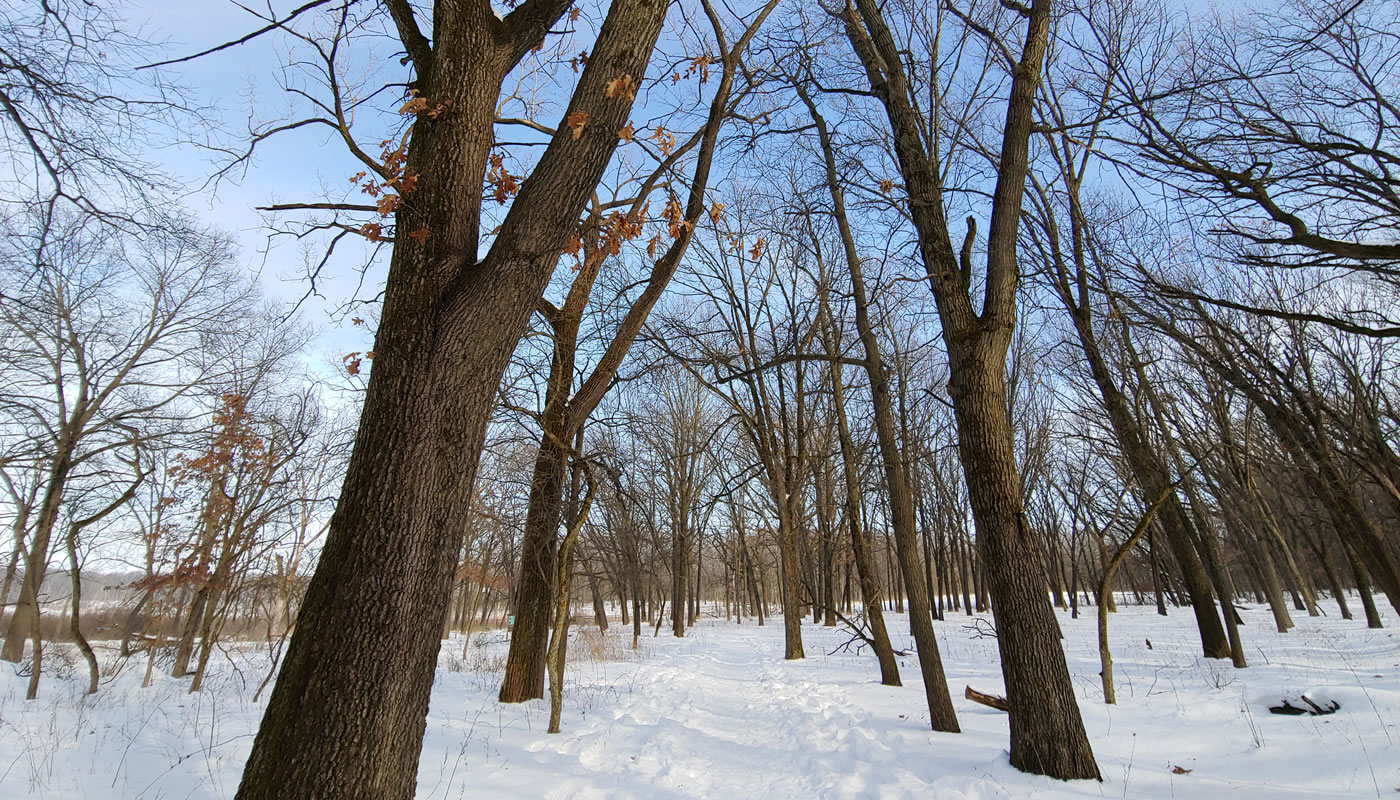With an estimated 20 million trees representing nearly 200 different species, the Forest Preserves of Cook County provides plenty of opportunities to check out trees. Many people first learn to identify trees by using their leaves, but how can you determine what species of tree you’re looking at once they have lost their leaves in the winter? Here are some tips and tricks you can use to identify the trees you encounter while out on the trails in the Forest Preserves:
The location of the tree
Different ecosystems will contain some different common groups of trees. Trees that prefer more sunlight, such as bur oaks, are more likely to be found in a savanna than in dense woodlands.
Specific features in the landscape may also give clues as to what kind of trees you are likely to find there. For example, you are more likely to find fire intolerant trees, such as maples, on the east side of a river. Rivers acted as firebreaks during the prairie fires that historically swept through our area, protecting these trees from prairie fires that were blown by the prevailing westerly winds.
The tree’s bark
The texture and pattern of trees’ bark varies considerably by species. Some trees have solid bark with very noticeable ridges; others have thin, papery bark that peels off the tree; and still others have bark that is very thin and tight around them. Certain trees have very distinct looking bark that you can use to quickly identify them. For example, shagbark hickory is easily recognizable because of the way the scales of its bark hang off the tree trunk, giving it a ‘shaggy’ appearance.
The tree’s shape
Different species of trees have branches that grow at different angles, giving the tree a distinct shape that you can use to recognize it from a distance. While this feature is a bit less accurate to tell tree species apart from each other as many do have similar forms, there are some trees with more distinct shapes. For example, American elms have branches that grow up at sharp angles from the tree, giving it a “vase-like” shape.
The tree’s twigs and buds
Examining the features of a tree’s twigs and buds is likely the most accurate way to identify a tree in winter; of all the different features used to identify winter trees, the features of their twigs are the most distinct from each other. Learning to recognize the parts of a twig, such as the terminal bud (the bud on the very end), lateral buds (the buds on the sides), and leaf scars (where last year’s leaves fell off) is a great way to quickly and confidently identify a tree species. For example, a tell-tale characteristic of oak trees is that they have a cluster of terminal buds, while most trees only have a single terminal bud.
If you are interested in improving your tree ID in winter skills or any other time of the year, the University of Illinois Extension’s forestry page is a great resource.

